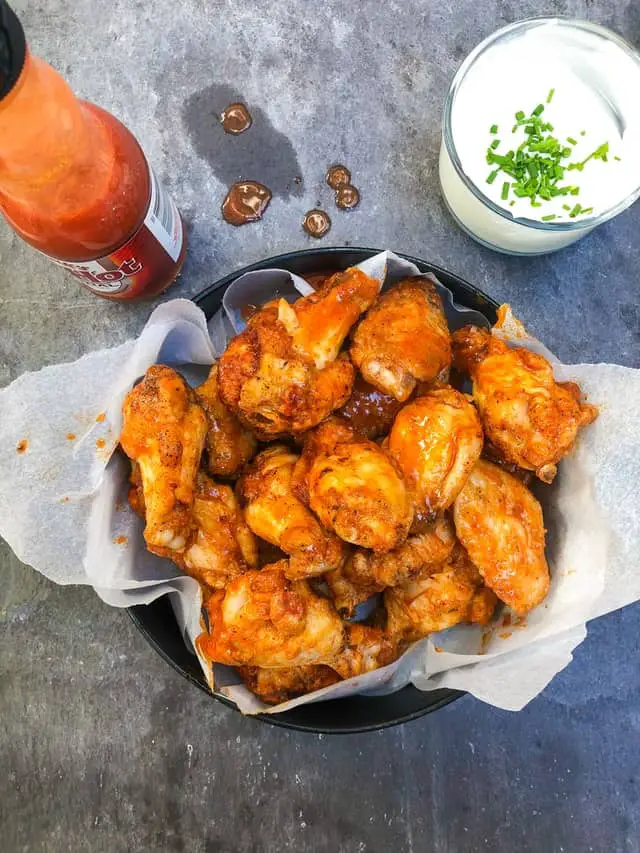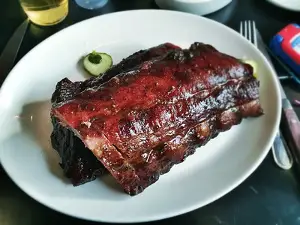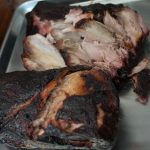
Has your dog just stolen a chicken wing from the bowl on the coffee table?
You know, those buffalo wings that your friends were meant to be eating whilst you watched tonight’s game?
Or perhaps, you deliberately tossed your dog a wing bone to snack on and the bloody thing just swallowed it whole?
That wasn’t meant to happen- you expected your dog to at least spend thirty seconds chewing it up…
However you got here..
You have a desperate need to find out if your dog, by swallowing a chicken wing bone whole, has done something immensely stupid and dangerous.
Or whether it is just plain daft and something you will just need to put down to “experience.”
Hopefully my article will help.
Why are chicken wing bones dangerous to most dogs?
Chicken wing bones are considered dangerous to most dogs because they’re fragile, and there’s a high probability that they’ll break and splinter when your dog is chewing on them.
Unlike the large bones we buy for our furry little friends, these bones are soft and tend to break, leaving very sharp edges.
That makes them dangerous to most dogs.
Chicken wing bones fragments are quite tricky and potentially harmful to your dog’s mouth, throat, and the lining of the digestive system.
So, stay alert, and make sure your dog doesn’t have access to chicken wings. Better safe than sorry!
Swallowed wing bone vs. eaten chicken wing bone-which is more dangerous?
- What are the dangers of a dog eating a wing bone?
If your dog ate a chicken wing bone, there’s the danger of choking or puncturing the gastrointestinal tract.
A broken chicken wing bone can cause your dog to choke.
The chicken wing bone can also get caught in the dog’s throat, which is extremely painful and potentially dangerous, and sometimes even deadly.
In such cases, it’s very important to call your vet for further instructions.
Sometimes, if you and the dog are lucky the digestive juices will soften the wing bone, getting it through the intestines and out the other end.
And, that’s an outcome we should all hope for!
- What are the dangers of a dog swallowing a chicken wing bone?
You shouldn’t be surprised if this happens, after all, chicken wing bone is one food that seems to be universally adored by our canine pals.
But, swallowing a chicken bone can be extremely dangerous to dogs.
If a dog swallows or tries to swallow a chicken wing bone, and it does not go all the way down, it can become stuck in the oesophagus.
If the dog shows significant signs of distress and might cough heavily or have trouble breathing, this is an immediate emergency that needs addressing and yet again contacting the vet is a great solution.
Your vet might suggest a trip to the clinic or recommend you to feed your dog something bulky like bread to cover around the sharp edges, to soften the chicken wing bone.
Whatever happens, it’s always wise to stay calm and treat these potentially dangerous situations with caution and care.
What are the signs that swallowing a chicken bone has harmed your dog?
If your dog swallowed a chicken bone, to avoid any harmful consequences, first you should be on the lookout for signs and symptoms of internal bleeding or blockages.
If that’s the case your dog would seem to be:
- lethargic
- constipated
- straining to defecate
- with a bloody stool
- gaging or retching
- vomiting
- coughing
- having trouble breathing
- bloated in the stomach
- without an appetite
- feeling generally uncomfortable
If your dog doesn’t show any of these symptoms you can check your dog’s stool daily to see if any bone fragments are passing through.
If that doesn’t happen within 72 hours, go to the vet to make sure the bones aren’t caught in your dog’s intestine, oesophagus, or throat.
On the bright side, if your dog is active, eating well, and seems cheerful as ever, it’s generally safe to simply monitor the situation. In the end, it never hurts to be cautious and extra careful, as the well-being of our faithful companions is at stake.
How else might “buffalo” wings upset your dog?
Before revealing the answer it’s safe to ask: Can dogs even taste spicy food or “buffalo” wings for that matter? The answer is no. In spicy food, dogs don’t actually taste the spice. So, what’s upsetting them?
Even though dogs don’t detect and taste the spice in “buffalo” wings, they do detect and react to the heat from the hot sauce that comes after. Basically, while your dog won’t be able to distinguish the spicy hot flavour, you can notice physical reactions, including general discomfort, an upset stomach, vomiting, and more. Another upsetting feature is that they’re deep-fried. So, next time your furry bud looks at you with those adorable puppy eyes asking for a taste of “buffalo” wings, it’s safer and wiser to say no.
Why are cooked bones more dangerous than raw bones?
Here it’s better to look at the wider picture. Not only chicken wing bones, but any cooked animal bones are more dangerous than raw bones. First of all, raw bones are softer and have a lot more nutritional value in comparison to cooked bones. What’s even more important, they are much healthier. Cooked bones should never be given to dogs because they aren’t safe. Apart from their deficiency of nutritious value, they are dry, fragile, and can easily splinter. Whether they are boiled, steamed, baked, smoked, or fried, cooked bones are dangerous to our pooches for many reasons. The collagen and nutrients are leached from the bone in the cooking process, leaving a once soft and flexible bone now brittle. So, chewing on a cooked bone is a choking hazard that you should probably try to avoid at all times. After all, you don’t want to see your pooch struggling with broken teeth, mouth injuries, or even worse internal bleeding.
What are the potential dangers of feeding your dog raw chicken?
Raw chicken can contain potentially deadly parasites or bacteria. The fact that it’s difficult to control bacteria growth in raw chicken is even more concerning. Feeding your dog raw chicken may not affect your dog if it’s in its prime, but it’ll surely raise red flags for puppies. You’d better leave the raw chicken out of the menu for puppies or dogs with a compromised immune system or fussy digestion. Looking after your pet’s health, it’s best to keep exceptionally vulnerable dogs safe from exposure to harmful bacteria.
How long does it take a dog to digest bone?
The answer to this question lies in your dog’s stomach acid. Typical of a carnivore, the dog has a simple, very acidic gut, designed to process large quantities of meat and bone. Researches show that during digestion the dog’s gut can reach below pH1.0, a level of acid that can remain for 5 hours. A couple of hours after eating a meal, when gastric juices would be in full flow, the average gastric pH of dogs ranges from pH1.5 ranging to pH2.1. Also, researchers have found out that at this type of acidity meat and bone is rapidly broken down, often reduced to chyme within an hour. Amazing, right!
What are the best bones to feed a dog?
When selecting the best bone to feed your dog, choose one that is size appropriate. A bone should be big enough so it doesn’t entirely fit in its mouth. It should be light enough so the dog can carry it around, but large enough that they will chew the ends rather than trying to eat it whole. Hence, the safest bones are the larger ones, from larger animals, such as cows, pigs, and lamps. Last but not least the bones should be weight-bearing bones (such as leg bones) because these bones are denser than smaller bones that aren’t weight-bearing.




